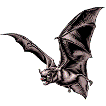Museum, University of Nebraska State

University of Nebraska State Museum: Mammalogy Papers
Document Type
Article
Date of this Version
7-11-1969
Citation
University of Kansas Museum of Natural History, Miscellaneous Publication (July 11, 1969) 51: 129-146.
Abstract
Various museums in recent years have published lists of type specimens housed in their collections. Such lists provide a useful point of reference for systematists and, for that reason, have been encouraged by the International Council of Museums. In 1968, that organization issued "A preliminary list of catalogues of type specimens in zoology and palaeontology," compiled by A. W. F. Banfield, and a revised list is planned for 1971. This catalogue of holotypes of mammals in the University of Kansas Museum of Natural History is particularly appropriate for the present volume, because Professor E. Raymond Hall was directly responsible for the descriptions of 20 taxa here listed, and was instrumental in arranging support for field work that resulted in the collection of many others.
The first type specimen of a mammal designated from the collections at Kansas was the holotype of Reithrodontomys dychei, described by J. A. Allen (1895:120). This specimen, originally KU (old series) 5232, was renumbered as 10127/8431 in the mammal collection of the American Museum of Natural History, where it now is housed. Similarly, the holotype of Mimon cozumelae, named by E. A. Goldman (1914:75), previously was in the collection at Kansas (original number, if any, unknown), but was presented to the U. S. National Museum, where it now is deposited as USNM 203191.
Ninety-nine holotypes and one allotype were among the nearly 120,000 specimens of Recent mammals housed in the Museum of Natural History as of December 31, 1968. These include two insectivores, 17 bats, five lagomorphs, 73 rodents, and two carnivores. Four of the holotypes-Nycteris vinsoni Dalquest, Scotophilus alvenslebeni Dalquest, Eumops perotis renatae Pirlot, and Ochotona princeps howelli Borell-were donated to the museum subsequent to the original description. Additionally, two holotypes of the rodent genus Ochrotomys are designated in this volume.


Comments
Copyright 1969, University of Kansas. Used by permission.